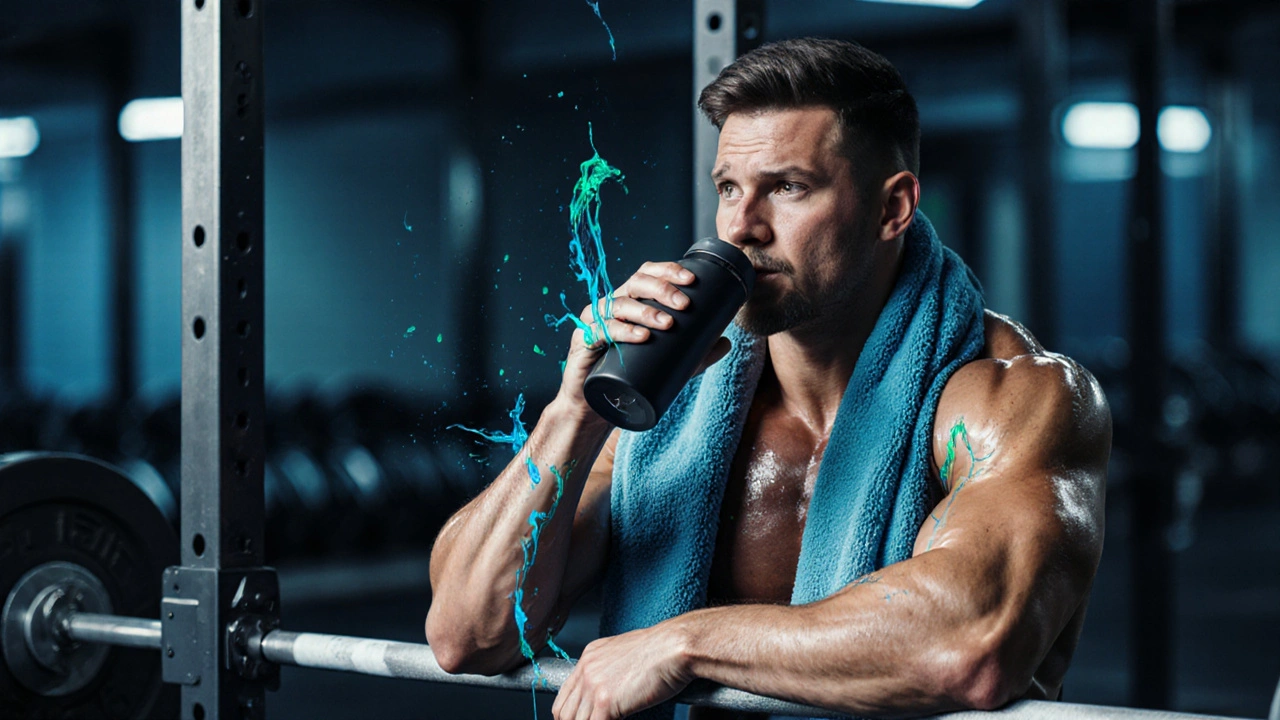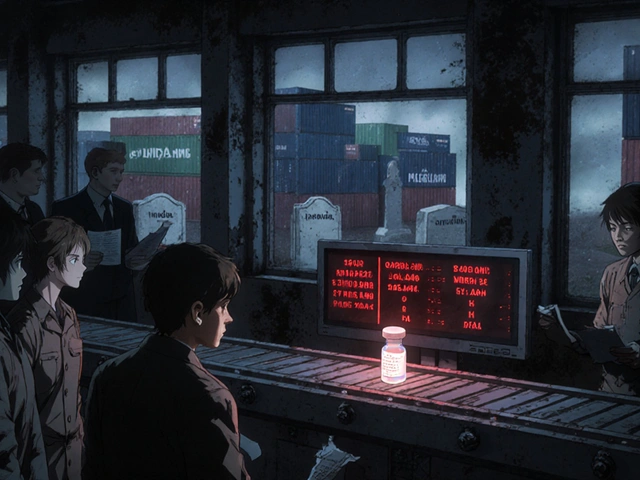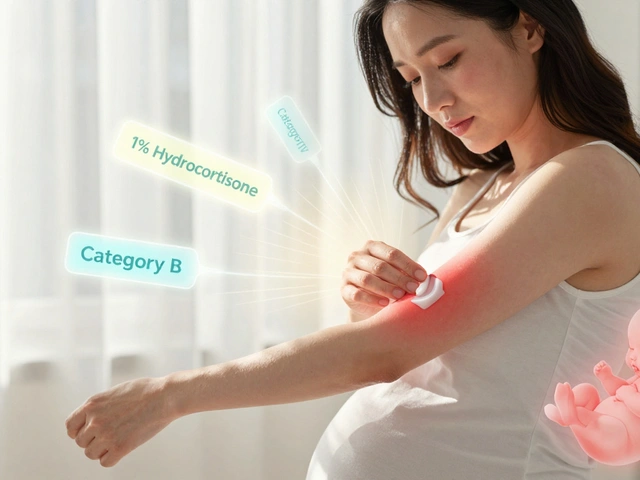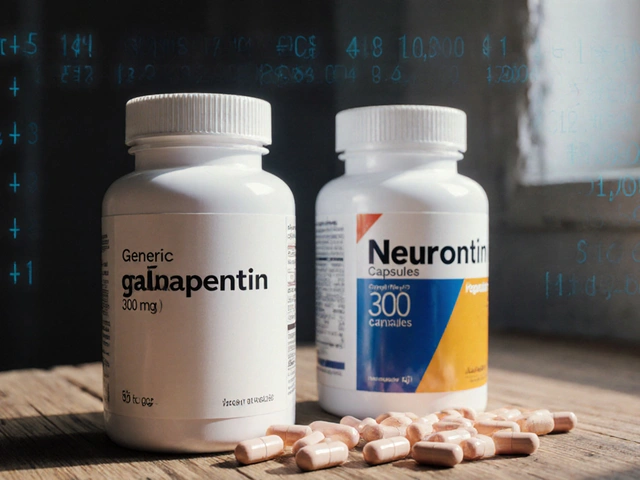Hydration & Muscle Recovery Calculator
Enter your details below to calculate your recommended daily water intake and hydration strategy for preventing muscle soreness.
Quick Takeaways
- Proper hydration reduces inflammation and speeds up muscle repair.
- Dehydration can double the perceived intensity of muscle ache.
- Electrolyte balance is as important as water volume.
- Drink before, during, and after exercise - timing matters.
- Choose fluids based on activity length and sweat loss.
Staying hydrated isn’t just about quenching thirst; it’s a science that directly influences how sore your muscles feel after a workout and how quickly they bounce back. In this guide we’ll unpack the biology, spot the warning signs of low fluid levels, and give you a step‑by‑step plan to use water - and the right kind of drinks - to keep muscle ache at bay.
How Hydration Impacts Muscle Health
When you first hear Hydration is the process of delivering water into every cell, tissue, and organ in the body. it sounds simple, but the ripple effect on muscles is profound. Water constitutes about 75% of a muscle cell’s volume, acting as a solvent for nutrients and a buffer for waste products like lactic acid. Adequate fluid levels keep the intracellular environment stable, which means enzymes that repair micro‑tears work efficiently.
Conversely, Dehydration is a state where water loss exceeds intake, leading to a drop in plasma volume. Less plasma means reduced blood flow, so oxygen and nutrients take longer to reach sore fibers. The resulting oxygen deficit forces muscles to rely more on anaerobic pathways, producing metabolites that heighten the feeling of ache.
Recognizing When You’re Not Hydrated Enough
Before you can fix a problem, you need to know it’s happening. Common cues that your muscles aren’t getting the fluid they need include:
- Dark yellow urine - a reliable hydration barometer.
- Sticky or dry mouth during exercise.
- Premature fatigue or a “heavy” feeling in the legs.
- Post‑workout soreness that lingers beyond 48hours.
- Elevated heart rate at a given intensity.
If you notice two or more of these signs, it’s time to boost your fluid intake.

Hydration Strategies for Prevention
Effective hydration isn’t a one‑size‑fits‑all habit; it follows a three‑phase approach.
- Pre‑workout: Aim for 500ml (about 17oz) of water 2-3hours before you start. If you’re exercising for over an hour, add 200-300ml of a low‑calorie electrolyte drink to prime your electrolyte stores.
- During workout: Sip 150-250ml (5-8oz) every 15-20minutes. For high‑intensity or hot‑climate sessions, switch to a beverage that contains sodium (≈300mg) to replace what you sweat out.
- Post‑workout: Replenish lost fluids by drinking 1.5× the weight you lost in sweat. Weigh yourself nude before and after exercise; each kilogram lost equals roughly 1liter of fluid you need to replace.
Remember, the goal isn’t to gulp water in a single burst but to maintain a steady flow that matches sweat loss.
The Role of Electrolytes and Fluid Balance
Electrolytes are minerals like sodium, potassium, and magnesium that carry an electric charge. They regulate fluid distribution between intracellular and extracellular compartments. When you sweat, you lose both water and electrolytes; replace one without the other and you risk an osmotic imbalance, leading to muscle cramping and prolonged soreness.
Fluid Balance is the equilibrium between fluid intake, distribution, and excretion. Maintaining this balance ensures optimal blood volume, which in turn sustains Blood Flow - the circulatory highway delivering oxygen, nutrients, and immune cells to damaged muscle fibers. Good blood flow speeds up the removal of metabolic waste, cutting down the inflammation that fuels aching.
Rehydration Options: Water vs Sports Drinks vs Electrolyte Powders
| Option | Sodium (mg/L) | Carbohydrates (g/L) | Best For |
|---|---|---|---|
| Plain Water | 0-10 | 0 | Short sessions (<45min), low‑sweat environments |
| Sports Drink (e.g., Gatorade) | 450-650 | 20-30 | Moderate to long workouts (45‑90min), warm climates |
| Electrolyte Powder (mixed with water) | 800-1200 | 0-5 | Endurance events >90min, high‑sweat scenarios |
If your goal is purely to prevent muscle ache, the choice hinges on sweat rate and exercise duration. Water works fine for a quick jog, but once you break the hour mark in heat, a sodium‑rich drink becomes essential to stop the cascade of dehydration‑induced inflammation.
Common Mistakes and How to Fix Them
Even seasoned athletes slip up. Here’s what to watch out for and easy fixes:
- Waiting until you’re thirsty. Thirst lags behind a 1‑2% loss in body water. Pre‑hydrate before feeling parched.
- Relying only on coffee or tea. Those beverages are diuretics and can actually increase fluid loss.
- Ignoring electrolyte needs. Replace sodium even on short runs if you’re sweating heavily.
- Over‑drinking during intense exercise. Too much fluid too fast can dilute blood sodium, leading to hyponatremia - a serious condition that also causes muscle cramps.
- Skipping post‑workout rehydration. Muscles stay in a catabolic state for up to 24hours; refilling fluids early accelerates the shift back to an anabolic, repair‑focused state.
Adjust your routine with the three‑phase plan above, and you’ll notice less post‑session ache and a quicker return to your next workout.

Frequently Asked Questions
How much water should I drink each day to prevent muscle soreness?
General guidelines suggest 30‑35ml per kilogram of body weight. For a 70kg adult, that’s about 2.1‑2.5L daily, plus extra for exercise‑induced loss.
Can I rely on fruit juices for electrolyte replacement?
Fruit juices provide potassium and carbs but are low in sodium. For most workouts, combine juice with a pinch of salt or choose a dedicated electrolyte drink.
Is it okay to drink coffee before a workout?
A small cup (≈200ml) won’t hurt, but replace it with an equal amount of water to offset the mild diuretic effect.
What’s the best way to gauge my sweat loss?
Weigh yourself nude before and after exercise. Each kilogram lost equals roughly one liter of fluid to replace.
Can over‑hydrating cause muscle aches?
Yes. Drinking excessive water without electrolytes can dilute blood sodium, leading to hyponatremia, which manifests as cramps and soreness.






Chuck Bradshaw
Hydration isn’t just a buzzword; it’s a physiological necessity that influences muscle cell osmolarity.
When you skimp on water, plasma volume drops and your muscles receive less oxygen, prolonging soreness.
The article’s calculator is handy, but remember that sweat rate categories are oversimplified.
Individual variability in electrolyte loss can render a “medium” label meaningless for many athletes.
Bottom line: drink consistently, not just when you feel the burn.
Howard Mcintosh
Stay hydrated and crush those reps!
Jeremy Laporte
Great breakdown! I love how the piece emphasizes pre‑workout hydration rather than just post‑exercise chugging.
The tips about weighing yourself to gauge fluid loss are especially practical for beginner lifters.
Also, the reminder that dehydration can double perceived soreness is eye‑opening.
It’s good to see electrolytes highlighted alongside plain water.
For anyone juggling a busy schedule, the three‑phase plan feels doable.
Keep spreading the word, and maybe add a quick reminder about rehydrating after sauna sessions.
Thanks for making science accessible.
Andy Lombardozzi
Proper hydration is a cornerstone of effective muscle recovery, and understanding the underlying mechanisms can empower athletes to optimize performance.
Water constitutes approximately seventy‑five percent of muscle cell volume, providing a medium for enzymatic reactions that repair micro‑tears.
When dehydration occurs, plasma volume diminishes, leading to reduced blood flow and delayed delivery of oxygen and nutrients to damaged fibers.
This oxygen deficit forces muscles to rely more heavily on anaerobic metabolism, producing metabolites such as lactate that exacerbate the perception of pain.
Moreover, inadequate fluid intake impairs the clearance of inflammatory cytokines, prolonging the inflammatory phase of muscle repair.
Electrolyte balance plays an equally vital role; sodium, potassium, and magnesium regulate fluid distribution across cellular membranes.
In high‑intensity or prolonged workouts, sweat loss can exceed two liters, stripping the body of both water and essential salts.
Replacing these losses with a sodium‑rich solution helps maintain osmotic equilibrium and prevents cramping.
The article correctly advises a pre‑exercise intake of five hundred milliliters of water two to three hours before activity.
It also suggests sipping one hundred and fifty to two hundred fifty milliliters every fifteen minutes during the session, which aligns with current sports science guidelines.
Post‑exercise rehydration should aim for one and a half times the measured body‑weight loss to fully restore intracellular volume.
For athletes who train in hot environments, incorporating carbohydrate‑electrolyte beverages can also replenish glycogen stores.
Consistency is key; establishing a habitual drinking schedule reduces the likelihood of reaching a dehydrated state.
By integrating these strategies, individuals can mitigate muscle soreness, accelerate recovery, and ultimately enhance training adaptations.
Remember, water alone is insufficient when electrolyte depletion is significant, so choose your fluids wisely.
Joshua Ardoin
Hydration is the secret sauce 🍶 that keeps muscles from feeling like rusty hinges after a tough session.
I love the three‑phase approach-pre, during, and post-because it’s easy to remember.
If you’re running for an hour, toss a pinch of salt into your water or grab an electrolyte drink, and those cramps will say goodbye 👋.
Also, the calculator tool is a neat visual aid, especially for newbies who aren’t sure how much to drink.
Stay consistent, listen to your body, and let the water do its magic 💧.
Cheers to faster recoveries!
ariel javier
The so‑called “guide” is riddled with vague categories and over‑generalized advice that borders on pseudo‑science.
Labeling sweat rates as merely low, medium, or high ignores the complex interplay of temperature, humidity, and individual physiology.
Moreover, the recommendation to “consider a sports drink” is a blatant commercial hook rather than evidence‑based counsel.
Readers deserve precise data, not marketing fluff, and the article fails to provide citations for its claims.
Until peer‑reviewed references are added, this piece remains little more than a watered‑down anecdote.
Bryan L
Thanks for the thorough overview! 😊 It’s helpful to see the practical steps broken down so clearly.
I especially appreciate the reminder about weighing yourself to estimate sweat loss – it makes the process tangible.
Keep sharing these science‑backed tips!
newsscribbles kunle
As a proud son of Naija, I can attest that our scorching afternoons demand more than just a sip of water.
The article’s emphasis on electrolytes hits home when you’re training under the blazing sun of Lagos.
Yet many foreign guides overlook the cultural habit of sipping fresh coconut water, a natural electrolyte powerhouse.
Incorporating our local drinks into the three‑phase plan can boost performance while honoring our heritage.
Let’s not forget that true athletes respect both science and tradition.
Bernard Williams
Ah, the symphony of water coursing through our tissues – a masterpiece that often goes unsung in the gym.
When you neglect this fluid concerto, muscles languish in a state of desiccated misery, and soreness becomes a relentless drumbeat.
The article correctly identifies plasma volume as the conduit for oxygen and nutrients, but let us amplify the point: even a 2% drop in hydration can impair strength output by up to ten percent.
Electrolytes, the unsung heroes, ensure that this aqueous highway remains open, preventing the dreaded cramps that sabotage a hard‑earned lift.
Imagine a marathon runner who sidesteps this balance; the result is a tragic tale of early fatigue and injury.
By adhering to the pre‑, intra‑, and post‑workout hydration protocol, you orchestrate a recovery that is swift and efficient.
Moreover, the calculator, while simplistic, serves as a useful primer for novices craving quantifiable guidance.
Remember, the body is not a rusty bucket; it is a finely tuned engine that thrives on proper fluid dynamics.
So raise your water bottle, salute the electrolytes, and let the healing commence!
Michelle Morrison
One must wonder why the fitness industry pushes water consumption so aggressively.
It is no secret that big corporations embed hidden agendas within such health advice.
The article, while seemingly innocent, omits the role of proprietary electrolyte blends that lock consumers into endless purchases.
Beware of the subtle manipulation; true wellness lies beyond commercial narratives.
Keep your eyes open.
harold dixon
I appreciate the balanced presentation of the hydration calculator.
Could you elaborate on how individual differences in kidney function might affect the recommended fluid volume?
Understanding such nuances would help readers customize their approach further.
Thanks for the thoughtful guide.